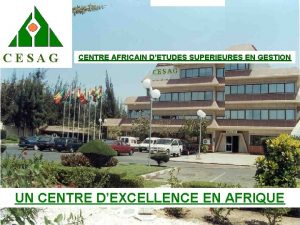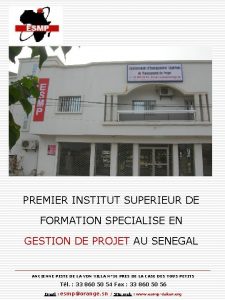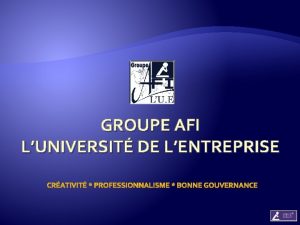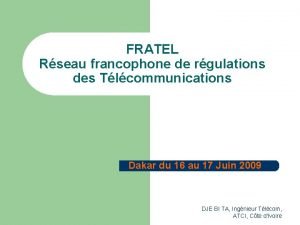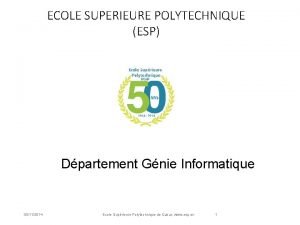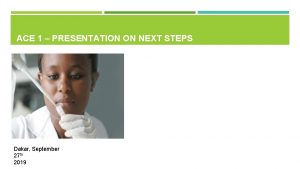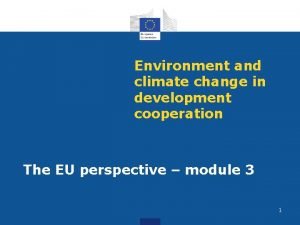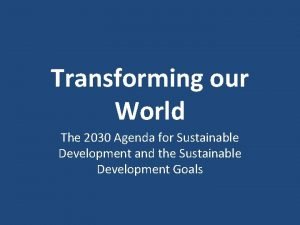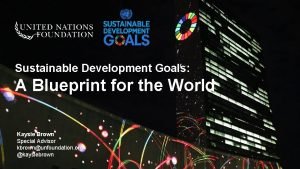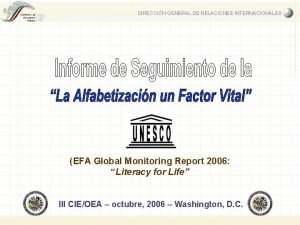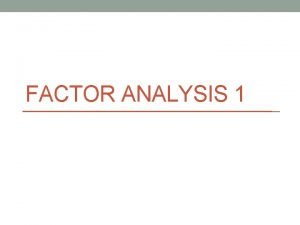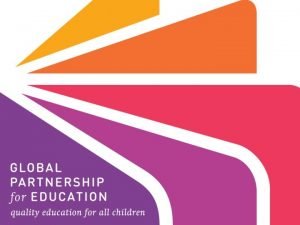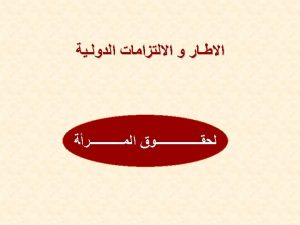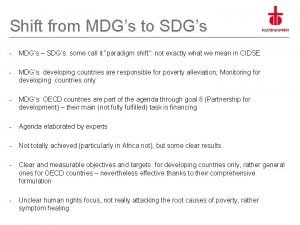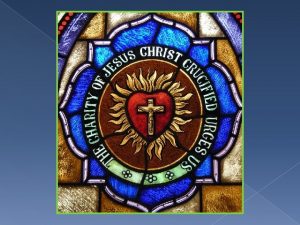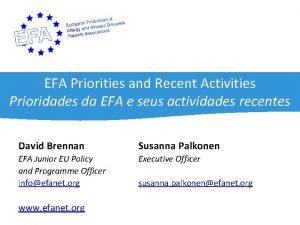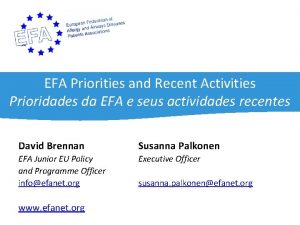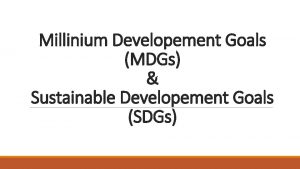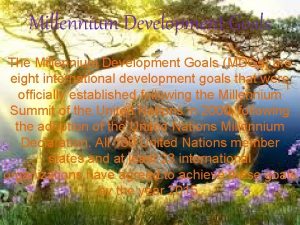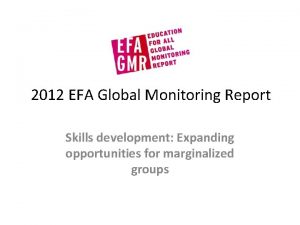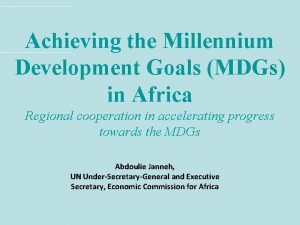EFA MDGs Dakar EFA Goals 2000 i expanding














- Slides: 14

EFA & MDGs

Dakar EFA Goals 2000 (i) expanding and improving comprehensive early childhood care and education, especially for the most vulnerable and disadvantaged children; (ii) ensuring that by 2015 all children, particularly girls, children in difficult circumstances and those belonging to ethnic minorities, have access to and complete free and compulsory primary education of good quality; (iii) ensuring that the learning needs of all young people and adults are met through equitable access to appropriate learning and life skills programmes; (iv) achieving a 50 per cent improvement in levels of adult literacy by 2015, especially for women, and equitable access to basic and continuing education for all adults; (v) eliminating gender disparities in primary and secondary education by 2005, and achieving gender equality in education by 2015, with a focus on ensuring girls' full and equal access to and achievement in basic education of good quality; (vi) improving all aspects of the quality of education and ensuring excellence of all so that recognized and measurable learning outcomes are achieved by all, especially in literacy, numeracy and essential life skills.

Six Goals of Dakar - EFA 1. ECCE - Early Childhood care and education. 2. UPE - Free and compulsory basic education. 3. Learning opportunities for Young & Adults. 4. Literacy Rate (50% improvement). 5. Gender equality - elimination of gender disparities. 6. Quality of education - Learning achievement.

Millennium Development Goals 2000 • • Goal 1: Eradicate extreme poverty and hunger Goal 2: Achieve universal primary education Goal 3: Promote gender equality and empower women Goal 4: Reduce Child Mortality Rate Goal 5: Improve maternal health Goal 6: Combat HIV/AIDS, malaria, and other diseases Goal 7: Ensure environmental sustainability Goal 8: Develop a global partnership for development

MILLENNIUM DEVELOPMENT GOALS • • End Poverty and Hunger Universal Education Gender Equality Child Health Maternal Health Combat HIV/AIDS Environmental Sustainability Global Partnership

EFA and MDGs EFA Goals – by 2015 MDGs – by 2015 1. ECCE: Expanding early childhood care and education Goal 2: Achieve universal primary education 2. UPE: Universal primary education Target 3: Completion of full primary schooling by all children 3. Continuing Education: Learning and life skills programmes for young and adults Indicator No 8: Literacy rate of 15 -24 year old 4. Literacy: 50% increase in adult literacy rates Goal 3. Promote gender equality and empower women 5. Gender: Eliminating gender disparities in primary and secondary by 2005, and gender equality in education by 2015 Target 4: eliminate gender disparity 6. Quality: Improving quality of education Indicator 10: Ratio of literate women to men, 15 -24 years old

MDGs – Pakistan MDGs Targets Indicators 1 Eradicate Extreme Poverty and Hunger 2 3 2 Achieve Universal Primary Education 1 3 3 Promote Gender Equality & Women Empowerment 1 4 4 Reducing Child Mortality 1 6 5 Improving Maternal Health 1 5 6 Combating HIV/AIDS, Malaria and other Diseases 2 5 7 Ensuring Environmental Sustainability 3 8 8 Develop a Global Partnership for Development* 5 7 16 37

International Commitments • EFA : Pakistan is signatory to EFA and MDGs - Literacy is one of the six Goals of EFA • Target: 86% literacy to be achieved by 2015 (National Plan of Action for EFA - Ministry of Education, 2003) • UN Literacy Decade (2003 -2012): Pakistan reflected achievement of UNLD goals in its PRSP-1 • LIFE : Pakistan has agreed to launch Literacy Initiative for Empowerment (LIFE) in 2005. • PRSP : EFA and Literacy are part of Poverty Reduction Strategy Paper (PRSP II)

National Commitments of Pakistan Constitution of Pakistan (1973) State shall be responsible for: “ eradication of illiteracy and provision of free and compulsory education up to secondary level, within minimum possible time” (Article 37 -B, 1973 Constitution of Pakistan)- Principles of Policy 18 th Amendment to the Constitution – Article 25 A – Education A Fundamental Right

Report Card: Literacy in Pakistan PSLM (2006 -07) – Statistics Division, Go. P Overall, 45% population (10+) is illiterate, and 58% Women can not read and write 70% Rural women are illiterate 76% Rural women in NWFP are illiterate 84% Rural women in Sindh can not read and write 85% Rural women in Balochistan are illiterate Disparities: 80% literacy among males in urban Sindh vs 15% literacy among females in rural Balochistan PSLM (2005 -06) 32 districts with literacy rate below 40% 56 districts with more than 70% illiterate women

Provincial Comparison of Rural Female Literacy (PSLM Survey 2006 -07) Punjab Sindh NWFP Balochistan

Number of Illiterates are increasing in Pakistan Year Pop 10 + (Millions) Literacy Rate (10+) Illiterate Pop (10+)-Million 1951 22. 71 17. 9 18. 64 1961 26. 12 16. 7 22. 08 1972 42. 91 21. 7 33. 59 1981 56. 33 26. 2 42. 69 1998 89. 84 43. 92 50. 38 2006 -07 112. 00 55. 00 50. 40 (estimated) (Source: Census Reports and projections for 2006 -07)

Education Budget in Pakistan: (1995 -96 to 2008 -09) (Source: Economic Survey (2002 -2003) – Finance Division – Government of Pakistan, Page 167, Table 11. 5 and Economic Survey of Pakistan 2005 -06, and EFA Global Monitoring Report 2008, 2009, and other related documents of Govt. of Pakistan) Year % of GDP 1995 -96 1996 -97 1997 -98 1998 -99 1999 -00 2000 -01 2. 00 2002 -03 1. 7 2. 62 2003 -04 2. 20 2. 34 2004 -05 2. 12 2. 40 2005 -06 2. 40 1. 7 2006 -07 2. 42 1. 6 2007 -08 2. 49 2001 -02 1. 9 2008 -09 1. 25 (PRSP II, page 316))

Literacy: What we are missing in Pakistan? • No active federal body for national level coordination: No official budget and forum for coordination meetings and harmonization of provincial efforts (meetings, if any, convened mainly with donors support) • No professional wings to support provincial Directorates or Departments in material development, research, and training (in formal education system there are Curriculum Bureaus, Textbook Boards, Training Colleges, and research institutes, None for the NFE) • No regular pattern for financing of Literacy and NFB: Funding for literacy and NFBE is sporadic, incidental, or depending upon links with those who really matter – not for literacy per se – No specified ratio of education budget for literacy (normally less than 1% of education budget)- • Federal and Provincial Roles: not specified, not followed – Occasionally, Fed Govt. institutions will self-assume direct implementation, – Some provinces will not commit provincial budget for literacy and NFBE –No tradition of joint financing or a role in implementation-monitoring (like in India).
 Strategic goals tactical goals operational goals
Strategic goals tactical goals operational goals Strategic goals tactical goals operational goals
Strategic goals tactical goals operational goals Programme de formation cesag dakar
Programme de formation cesag dakar Esmp dakar
Esmp dakar Afi dakar frais de scolarité
Afi dakar frais de scolarité Atci group dakar
Atci group dakar Esp dakar formation payante
Esp dakar formation payante Spets dakar
Spets dakar Millennium goals 2000
Millennium goals 2000 Millennium goals 2000
Millennium goals 2000 Millennium goals 2000
Millennium goals 2000 General goals and specific goals
General goals and specific goals Motivation in consumer behaviour
Motivation in consumer behaviour Efa global
Efa global Factor extraction
Factor extraction


